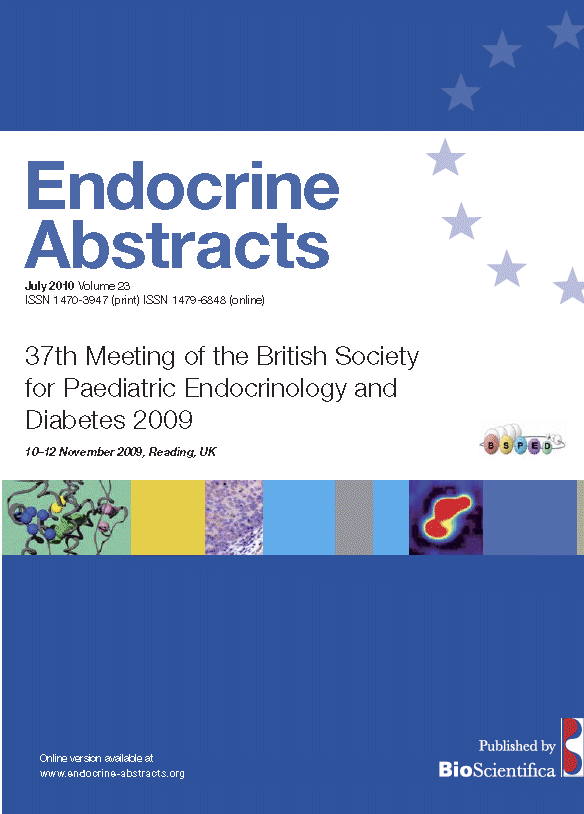
37th Meeting of the British Society for Paediatric Endocrinology and Diabetes
Oral Communications
Oral Communications 4
ea0023oc4.1 | Oral Communications 4 | BSPED2009
Parahippocampal aberrations in children with GH deficiency: a diffusion tensor imaging study
Webb E A , O'Reilly M , Seunarine K , Clayden J , Dale N , Salt A , Clark C , Dattani M T
ea0023oc4.2 | Oral Communications 4 | BSPED2009
First report of a de novo heterozygous SOX2 deletion associated with a large hypothalamo-pituitary tumour gives further insights into the role of SOX2 in pituitary development.
Alatzoglou Kyriaki S , Arriazu Maria Cristina , Crolla John , Martinez-Barbera Juan Pedro , Roubicek Martin , Dattani Mehul T
ea0023oc4.3 | Oral Communications 4 | BSPED2009
Pituitary adenomas presenting in children and young people: a single centre experience
Steele Caroline , Blair Jo , Didi Mo , Javadpour Mohsen , MacFarlane Ian , Daousi Christina



